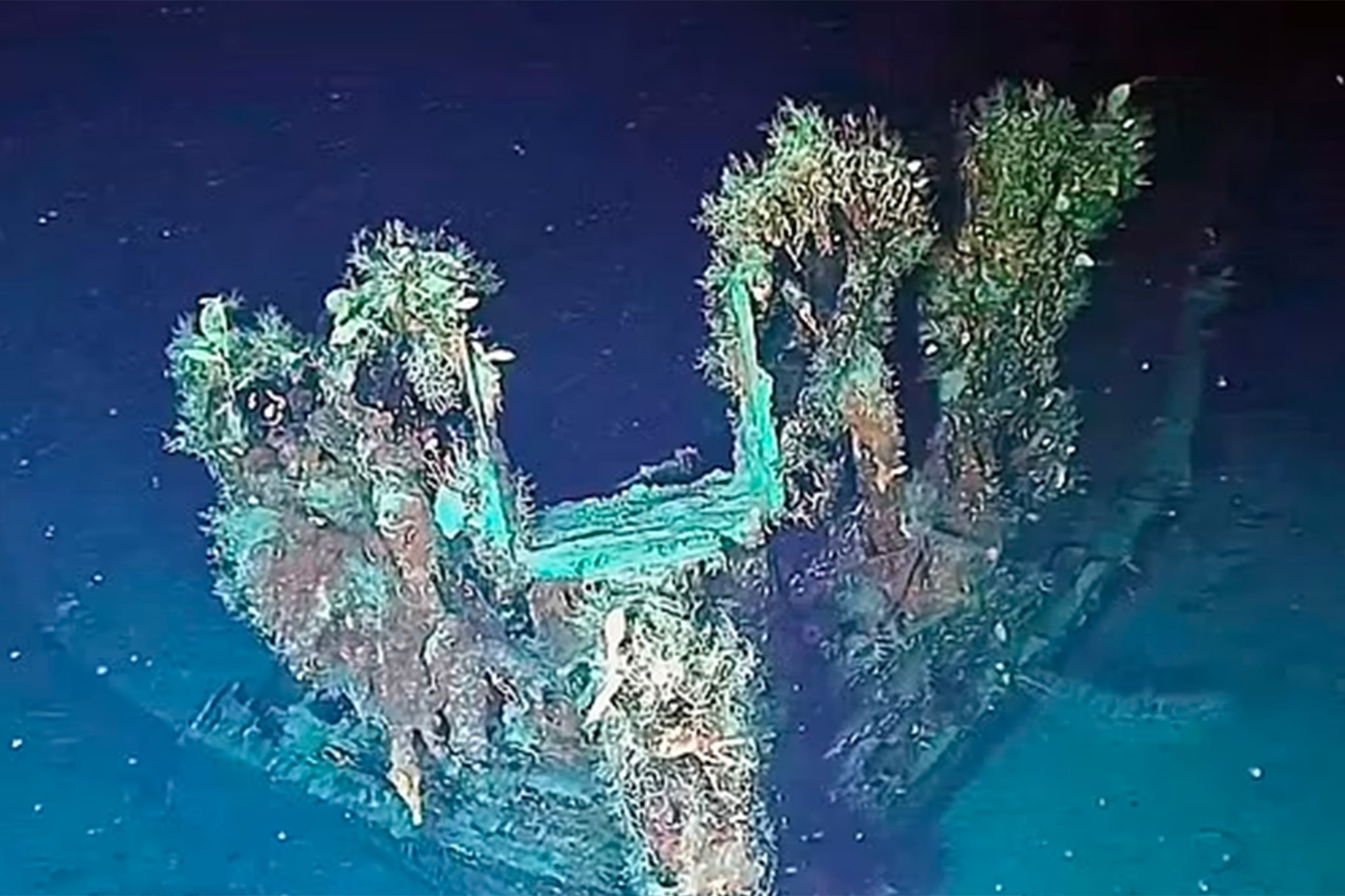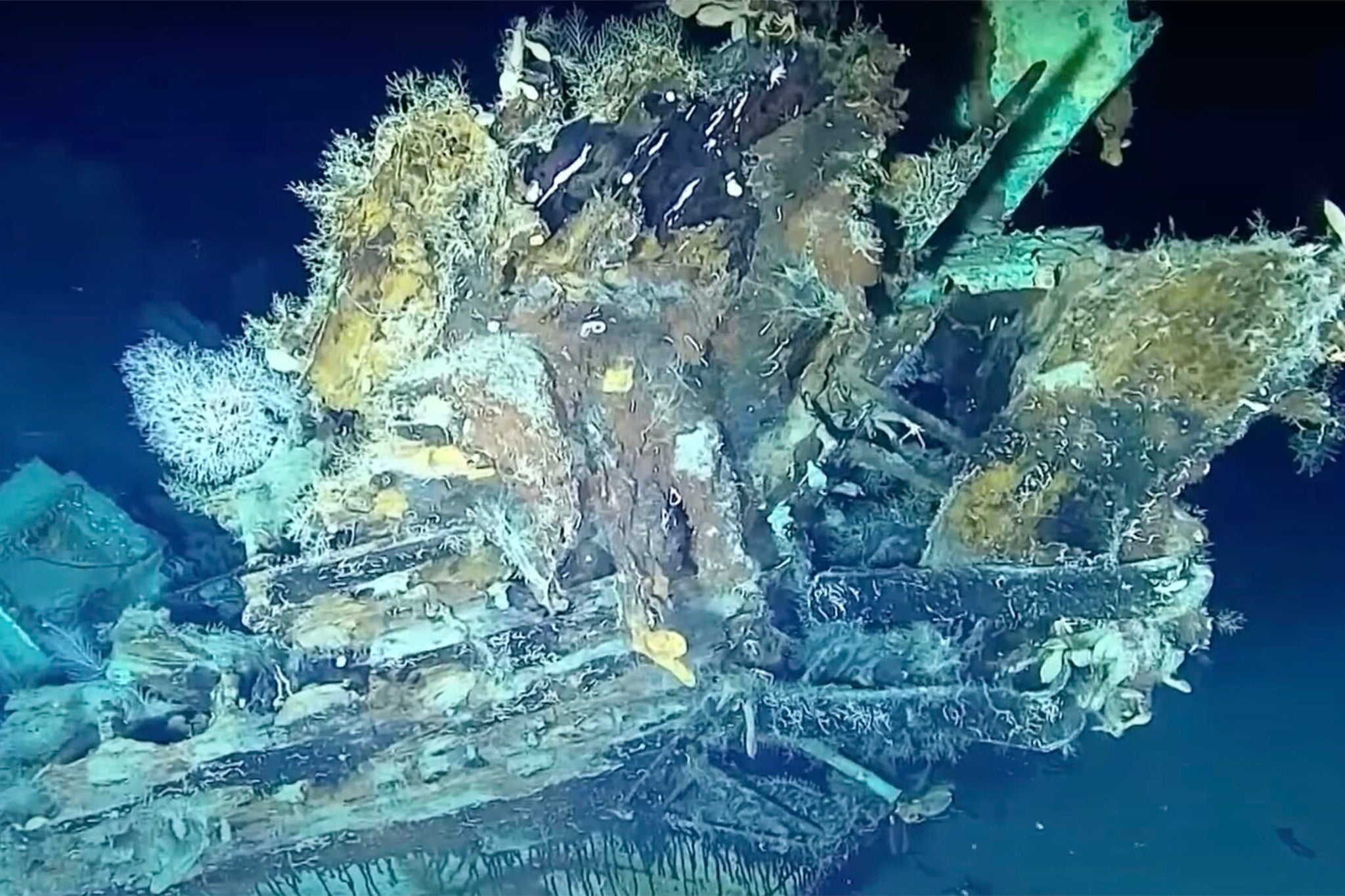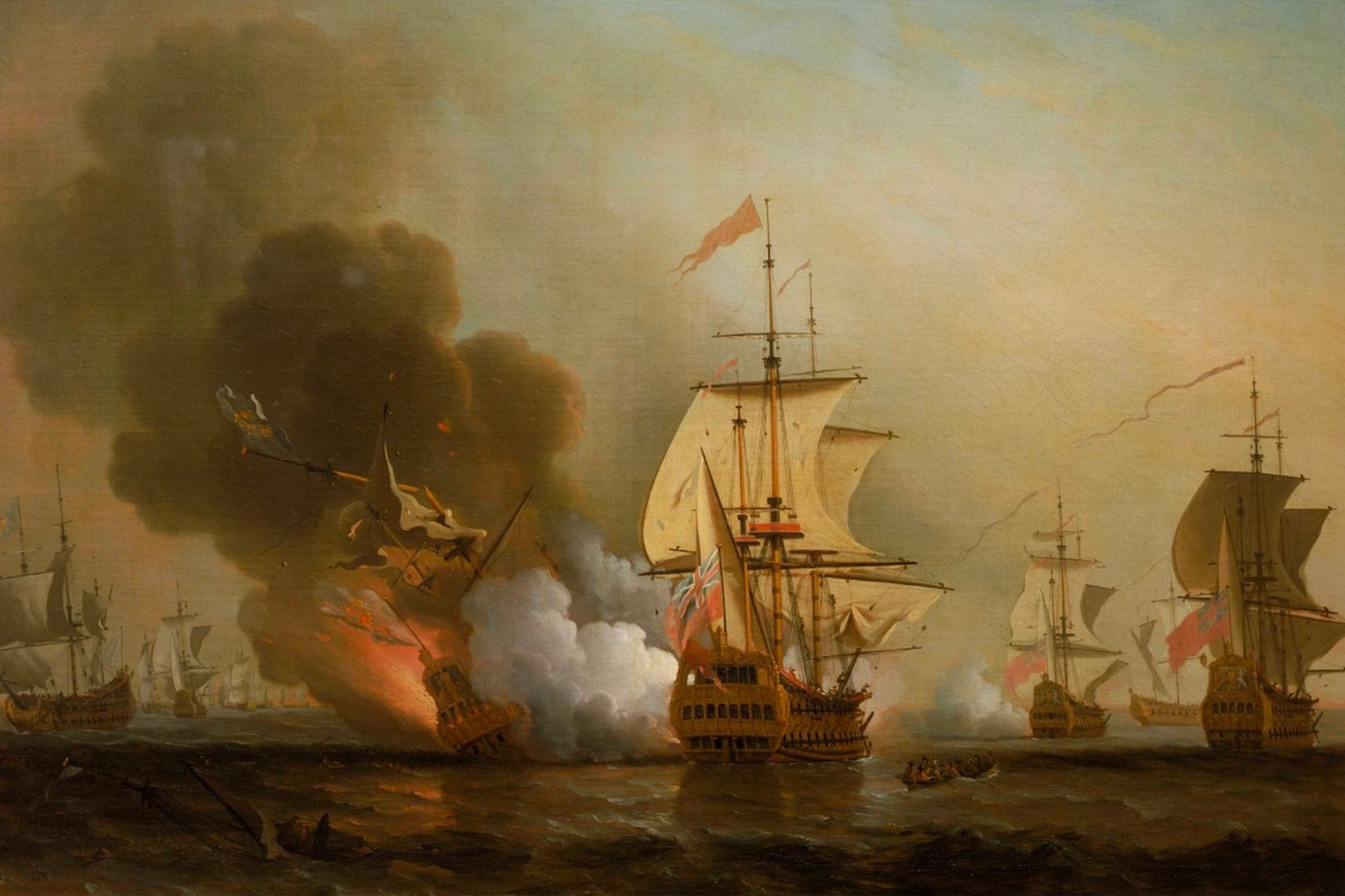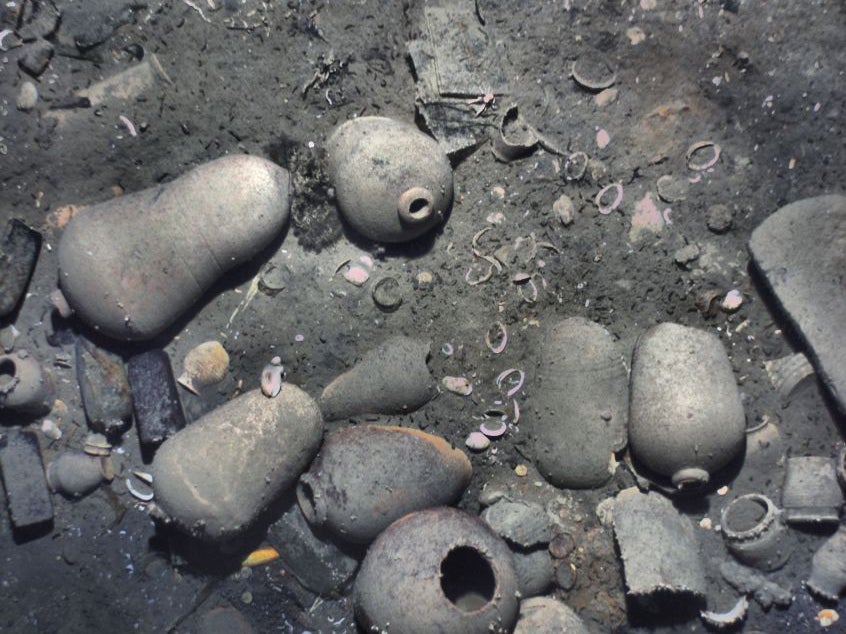Inside the ‘holy grail’ shipwreck being pulled up from the ocean
A race is underway to recover the shipwreck, with questions pending over who will claim its treasure, writes Martha McHardy

Your support helps us to tell the story
From reproductive rights to climate change to Big Tech, The Independent is on the ground when the story is developing. Whether it's investigating the financials of Elon Musk's pro-Trump PAC or producing our latest documentary, 'The A Word', which shines a light on the American women fighting for reproductive rights, we know how important it is to parse out the facts from the messaging.
At such a critical moment in US history, we need reporters on the ground. Your donation allows us to keep sending journalists to speak to both sides of the story.
The Independent is trusted by Americans across the entire political spectrum. And unlike many other quality news outlets, we choose not to lock Americans out of our reporting and analysis with paywalls. We believe quality journalism should be available to everyone, paid for by those who can afford it.
Your support makes all the difference.A Spanish galleon described as “the Holy Grail of shipwrecks” is set to be raised from the ocean floor - along with its treasures which are believed to be worth up to $20bn.
The Colombian government said the San Jose, which was sunk by the British navy in 1708 off the port of Cartagena, will be brought above water before president Gustavo Petro ends his term of office in 2026.
The ship was a 64-gun, three-masted galleon of the Spanish Armada.
It is thought to have sunk with a huge amount of treasure aboard, including 200 tonnes of silver, emeralds and eleven million gold coins.
Now, a race is underway to recover the shipwreck, with questions pending over who will claim its treasure.
What do we know about the shipwreck?
The San Jose was built in 1698 for one of the most lucrative trade lanes ever devised in the history of shipping.
The ship was part of a convoy of ships known as the “Spanish treasure fleet,” which transported gold, silver and gems from Latin American colonies back to Spain, creating vast wealth for Spain’s contested ruler, King Philip of Anjou, and his war effort.
Many of the treasures on board the San José were taken from Colombian and Peruvian mines using slave labour, Insider reported.

But during a prolonged battle off Cartagena with the British, the ship sank.
The San Jose was found lying nearly 3,100 feet below the ocean’s surface in 2015, according to the Colombian government.
Despite sitting on the ocean floor for more than 300 years, much of the ship is still thought to be perfectly preserved, according to pictures taken of the wreck by Navy divers last year.
The images also show a part of the bow covered in algae and shellfish, as well as the remains of the frame of the hull.
Navy divers discovered valuable treasures aboard the shipwreck, including gold ingots and coins, as well as the ship’s muddy cannons made in Seville in 1655, and an intact Chinese dinner service. Porcelain crockery, pottery and glass bottles were also found aboard the ship.
Colombian minister of culture Juan David Correa told Bloomberg that recovering the ship within the next two years is now a priority for president Petro. “The president has told us to pick up the pace,” he said.
He added that when the wreck’s treasures are recovered, they will be studied thoroughly before they are transported to a national museum.
What treasure does the San Jose contain?
The San Jose is thought to have been carrying 200 tonnes of silver, emeralds and eleven million gold coins at the time that it sank.
Historical records suggest the ship was carrying wealth accumulated from several of South America’s Spanish colonies, including over 100 steel chests full of emeralds and millions of gold and silver coins.
The treasure’s value is thought to total up to $20bn in today’s money.


Colombian President Juan Manuel Santos said the ship’s treasure is “the most valuable that has been found in the history of humanity.”
Who will get the treasure?
When the shipwreck is recovered, it is expected that there will be a dispute over who should lay claim to the bounty.
The ship has been the subject of a legal battle in the United States, Colombia and Spain over who owns the rights to the sunken treasure.
Colombia’s government said Thursday that it formally began arbitration litigation with Sea Search Armada, a group of American investors, for the economic rights of the San José. The firm claims $10 billion corresponding to what they assume is worth 50% of the galleon treasure that they claim to have discovered in 1982.
The ship was lost to history until 1981 when a US salvage consortium called Glocca Morra claimed to have located the San Jose.
But the Colombian government has disputed this, claiming it independently found the galleon with a team of divers in 2015, at a different location, which remains secret.


Glocca Morra has claimed it is owed $10bn by the Colombian government and said it has handed over the coordinates of the shipwreck to the Colombian authorities.
The company are suing the Colombian government for half the treasure and the arbitration case is currently being heard in London, according to Bloomberg.
However, Mr Correa said the government’s team had visited the coordinates given by the company and found no trace of the San Jose.
Colombia said on Friday that it is investing about $4.5m in 2024 alone to explore the galleon.
The government is keeping the location of the expedition a secret to deter amateur treasure hunters.
Spain and Bolivia’s indigenous Qhara Qhara nation also claim ownership over the ship after, they said, the Spanish forced their people to mine the metals used in the treasure.
What happened to San Jose?
Launched in 1698, the ship sank in a battle off Barú Island south of Cartagena as it was travelling from the New World to the court of King Philip V of Spain, laden with treasure for the royal coffers.
Historians say the ship encountered a British squadron near Barú and in the ensuing battle the legendary galleon’s powder magazines detonated, destroying it and killing over 500 members of the crew on 8 June 1708 off Cartagena, during the War of the Spanish Succession.
During the battle, which lasted for over an hour, the ship’s powder magazine detonated, causing it to sink.
There were 600 sailors on board, all but 11 of whom went down with the ship.
Carlos Reina Martínez, archaeologist and leader of the submerged cultural heritage of ICANH, said the operation seeks to discover what life was like for the 600 people on board the boat when it sank and to study daily life, the cargo, artillery and merchandise of the colonial era in America.
“It is time to claim the heritage elements for which the remains of the galleon should be valued,” said Juan David Correa, Colombia’s minister of culture, who insisted that the value of the wreck is patrimonial and not monetary. “History is the treasure.”
Join our commenting forum
Join thought-provoking conversations, follow other Independent readers and see their replies
Comments